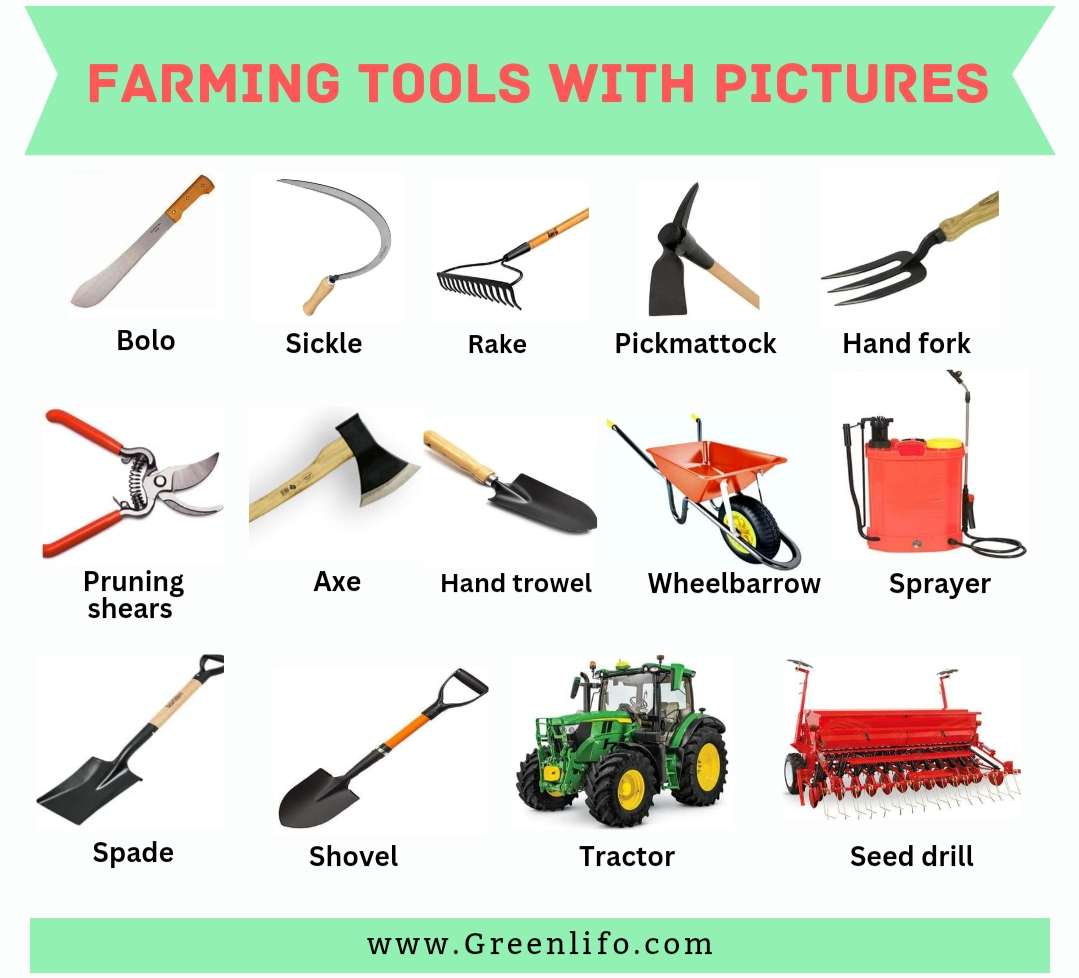Agriculture is considered a fundamental pillar of human civilization, providing essential nutrients such as food, fiber and other resources important for survival. Farmers depend on a wide range of tools and equipment adapted for different tasks to solve the complex problems of agriculture.
Appreciating the names and functions of these tools is of significant importance to anyone involved in the agricultural sector. This article explores common agricultural tools and equipment, shedding light on their diverse applications and importance in agricultural practices.
What are agricultural tools?
An agricultural tool is any tool or equipment used in the practice of agriculture to perform specific tasks related to growing crops, managing livestock, or maintaining farm infrastructure. These tools range from simple hand tools such as shovels and hoes to complex machinery such as tractors and combine harvesters.
The choice of farming tools depends on factors such as the type of crop being grown, the size of the farm, and the specific tasks required for successful agricultural production.
Explore agricultural tools: Learn their uses
Curious about the tools needed for farming? Agriculture involves a diverse range of tools, each serving specific purposes and used at different stages of production.
Below, we’ll dive into some of the most popular agricultural tools and how to use them.
Shovel:
One of the most basic and versatile tools on the farm, the shovel, is used to dig, lift and move materials such as soil, gravel and compost. It comes in a variety of sizes and shapes, including square shovels, round shovels, and spade shovels.
 shovel
shovel
Hoe:
Hoes are essential for weeding, loosening and cultivating soil. They come in different types, such as drag hoes, used for chopping and loosening soil, and cultivating hoes, ideal for weeding tight spaces.
 hoe
hoe
Scratch:
Rakes are used to collect waste, level land and spread mulch. They come in a variety of designs, including leaf rakes to collect leaves and garden rakes to level the soil.
 Scratch
Scratch
Wheelbarrow:
Wheelbarrows are indispensable for transporting large volumes of soil, mulch or other materials around the farm. They include a single wheel and a tray to carry the load, making them easy to maneuver.
 wheelbarrow
wheelbarrow
Tractor:
Tractors are powerful machines used for a variety of tasks, including plowing, cultivating, planting, and harvesting. They come in many sizes and configurations, from small garden tractors to large agricultural tractors with advanced features.
 Tractor
Tractor
Plow:
Plow the land and prepare the soil for planting. They come in many different types, including mold plows, disc plows and chisels, each suited to specific soil conditions and farming practices.
 Plow
Plow
Harrow:
Harrows are used to smooth and level the soil after plowing, breaking up clods, and fertilizing. They come in different types, such as disc harrows, chain harrows, and sharp-tooth harrows.
 harrow
harrow
Seeding machine:
Seeders are precision seeding machines used to sow seeds at a consistent depth and distance. They help farmers achieve uniform crop acreage and maximize yield potential while reducing seed waste.
 Seeding machine
Seeding machine
Ejector:
Sprayers are used to apply fertilizers, pesticides, and herbicides to plants. They come in a variety of types, including handheld, backpack, and tractor sprayers, each suited to specific application needs.
 Ejector
Ejector
Irrigation system:
Irrigation systems provide water for plants, ensuring optimal humidity for plants to grow and develop. They come in many different forms, including drip, sprinkler and flood irrigation systems.
 Irrigation system:
Irrigation system:
…and that’s a wrap
Agricultural tools and equipment play an important role in all stages of agricultural production, from planting to harvesting. Understanding the names and uses of these tools is essential for farmers to manage their operations effectively and maximize productivity.
By investing in the right tools and equipment and using them effectively, farmers can ensure the success of their crops and contribute to food security and sustainability.

